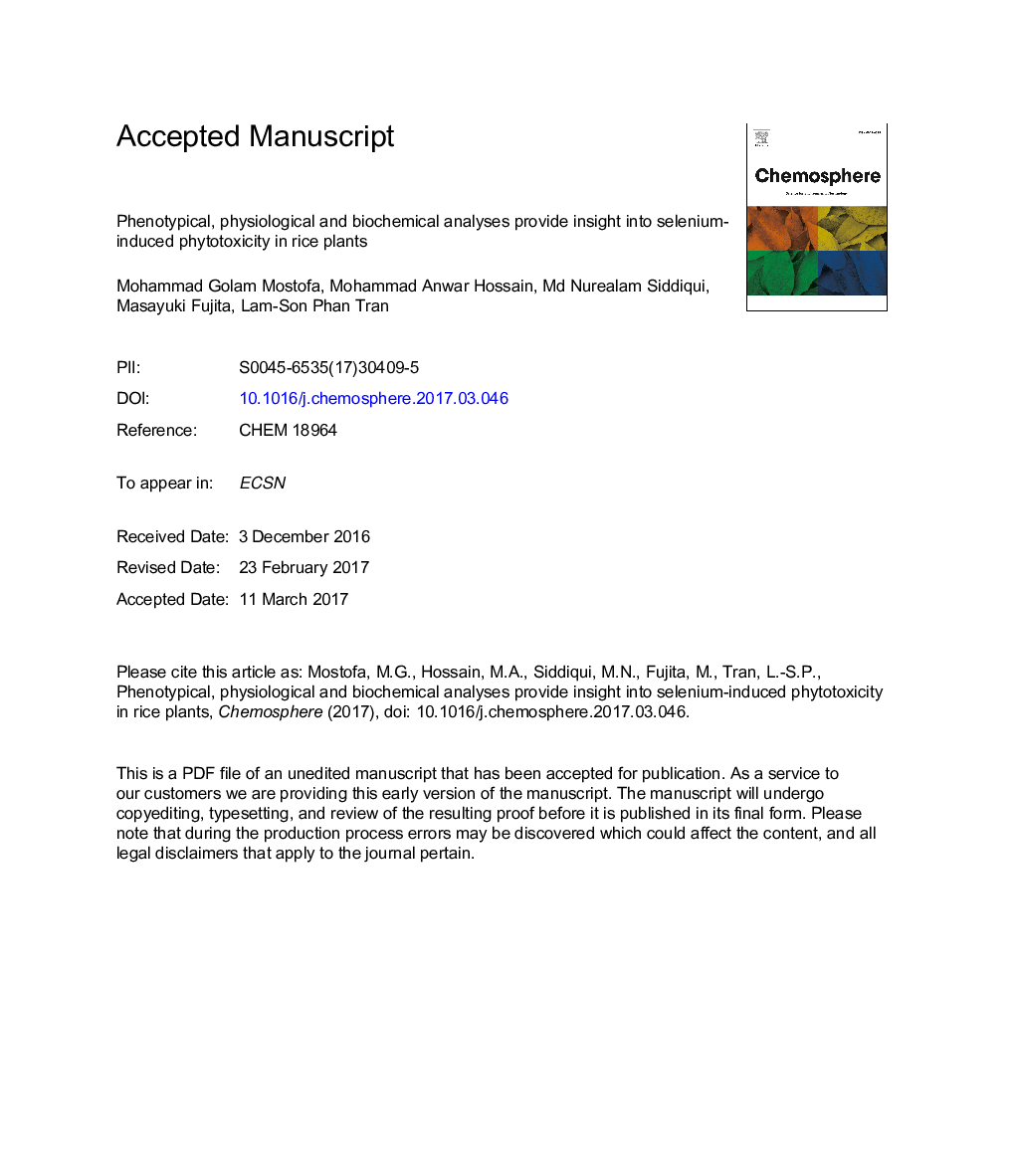| کد مقاله | کد نشریه | سال انتشار | مقاله انگلیسی | نسخه تمام متن |
|---|---|---|---|---|
| 5747247 | 1618793 | 2017 | 43 صفحه PDF | دانلود رایگان |
عنوان انگلیسی مقاله ISI
Phenotypical, physiological and biochemical analyses provide insight into selenium-induced phytotoxicity in rice plants
ترجمه فارسی عنوان
تجزیه و تحلیل فنوتیپ، فیزیولوژیکی و بیوشیمیایی بینش فیتوتوکسیسیت ناشی از سلنیوم را در گیاهان برنج ارائه می دهد
دانلود مقاله + سفارش ترجمه
دانلود مقاله ISI انگلیسی
رایگان برای ایرانیان
کلمات کلیدی
اثرات فیتوتوکسیک، متابولیسم اکسیداتیو، هوموستاز سلنیوم، مکانیسم های فیزیولوژیکی و بیوشیمیایی،
موضوعات مرتبط
علوم زیستی و بیوفناوری
علوم محیط زیست
شیمی زیست محیطی
چکیده انگلیسی
The present study investigated the phenotypical, physiological and biochemical changes of rice plants exposed to high selenium (Se) concentrations to gain an insight into Se-induced phytotoxicity. Results showed that exposure of rice plants to excessive Se resulted in growth retardation and biomass reduction in connection with the decreased levels of chlorophyll, carotenoids and soluble proteins. The reduced water status and an associated increase in sugar and proline levels indicated Se-induced osmotic stress in rice plants. Measurements of Se contents in roots, leaf sheaths and leaves revealed that Se was highly accumulated in leaves followed by leaf sheaths and roots. Se also potentiated its toxicity by impairing oxidative metabolism, as evidenced by enhanced accumulation of hydrogen peroxide, superoxide and lipid peroxidation product. Se toxicity also displayed a desynchronized antioxidant system by elevating the level of glutathione and the activities of superoxide dismutase, glutathione-S-transferase and glutathione peroxidase, whereas decreasing the level of ascorbic acid and the activities of catalase, glutathione reductase and dehydroascorbate reductase. Furthermore, Se triggered methylglyoxal toxicity by inhibiting the activities of glyoxalases I and II, particularly at higher concentrations of Se. Collectively, our results suggest that excessive Se caused phytotoxic effects on rice plants by inducing chlorosis, reducing sugar, protein and antioxidant contents, and exacerbating oxidative stress and methylglyoxal toxicity. Accumulation levels of Se, proline and glutathione could be considered as efficient biomarkers to indicate degrees of Se-induced phytotoxicity in rice, and perhaps in other crops.
ناشر
Database: Elsevier - ScienceDirect (ساینس دایرکت)
Journal: Chemosphere - Volume 178, July 2017, Pages 212-223
Journal: Chemosphere - Volume 178, July 2017, Pages 212-223
نویسندگان
Mohammad Golam Mostofa, Mohammad Anwar Hossain, Md. Nurealam Siddiqui, Masayuki Fujita, Lam-Son Phan Tran,
